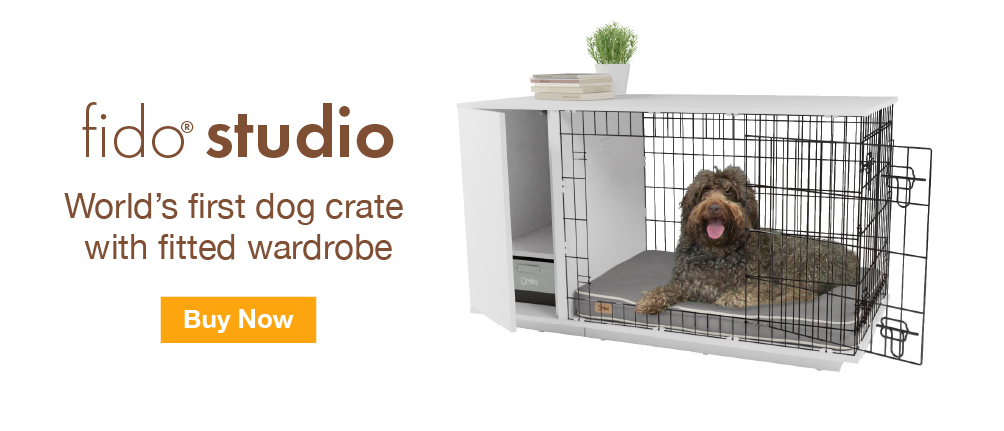Many parents swear that keeping a dog is great practice for looking after young children. Both require attention and teaching, both will try and get into your bed at night unless you train them otherwise, and both will force you to fit your life around their basic needs. But it can be even more of a struggle to manage looking after both of them at the same time. Dogs and babies can work, however, if you take the following steps to prepare your dog for your baby’s arrival.
Dogs and babies: making it work
A well-trained dog will learn to accept a new baby as part of the household and will recognise how important they are to you. But, one point where some people fall down is the simple problem of time and priorities. A baby can soak up all your time, leaving the dog feeling confused and abandoned. What happens to the dog then, and who will be there to keep them exercised, loved and entertained? These are questions you need to ask if you’re thinking of getting a dog at a time of life when children are a future possibility.
If the baby enters your life before the dog, a new puppy can teach them some very valuable life lessons such as caring for others and friendship. This being said, dogs and babies should never be left alone, regardless of who arrived first.
How to teach your dog to behave around a baby or child
Dogs and children can develop a strong bond, and the dog will often become the child’s best friend and protector.
To introduce your dog and baby, begin the process by letting your dog sniff a piece of the baby’s clothing. This should be done before letting them meet face-to-face. Hold the clothing at a distance from the dog’s nose to start with. When, after several days, they get to see the baby, they’ll recognise the smell they’ve been getting used to.
Again, you must never leave your baby alone with your dog, even if you feel they’re the most trustworthy dog in the world.
All dogs need to be trained before being introduced to children. If you plan on getting a dog before having a baby, please note that some dog breeds are known for being better for families. It’s best to research dog breeds beforehand to make sure they’re compatible with your family, home and lifestyle - particularly if you’re a first-time dog owner. This will help you understand the dog’s traits and behaviors, so you can train them accordingly.
Dogs and babies: 5 things to consider
1. Children can find winding up a dog funny. If they repeatedly provoke your dog then it will eventually snap and may even bite your child, so stop this behavior as soon as you notice it.
2. Children who are scared of dogs might choose, at some point, to run away from the dog or scream. It’s a good idea to teach your children to stay calm around the dog, otherwise, you might find that this kind of behavior will provoke play-fighting or aggression in a dog.
3. Dogs can often be protective of their dog toys, food or chew bones. Teach your dog that they should not show aggression when somebody approaches them, but equally, teach your children not to try to take away a dog toy, food, etc, that the dog is engrossed in.
4. Children can sometimes get a little too playful with dogs and might even pull their coat, ears or tail. If this happens there is always a chance that your dog could bite in defence. Teach your children that this behavior is unacceptable.
5. Some breeds of dog are exceptionally good with children. For example, dogs with a calmer temperament like the Labrador are the perfect choice for a family with small children. But, breed descriptions are not the entire story, as all dogs have individual personalities.
Create a safe space for your dog
Your dog should always have their own safe haven to retreat to whenever they need a rest. This will be important to them once the baby arrives and begins to crawl around. Crate training your dog is a great way to provide them with a calm, safe place where they can rest in and feel confident that their space won’t be invaded by anyone else.
An Omlet dog crate is designed to offer the comfort and security your dog craves. The Topology luxury dog bed fits into the crate perfectly and will be the ultimate comfort to your dog when they need a break from your toddler. You should teach your child not to disturb your pet while they’re inside their dog crate, to prevent them from toddling up to the dog unexpectedly.
Omlet and your dog
It’s important to train your dog to be comfortable around babies and children, so they can build a connection with each other that's just as strong as yours is with your dog. At Omlet, it’s our mission to celebrate and nurture those relationships with the products we create. From dog crates and dog beds, to a whole range of essential dog products, we engineer our designs to be just as supportive, cozy and enjoyable for your dog as your connection is with them.







Comments
There are no comments just yet